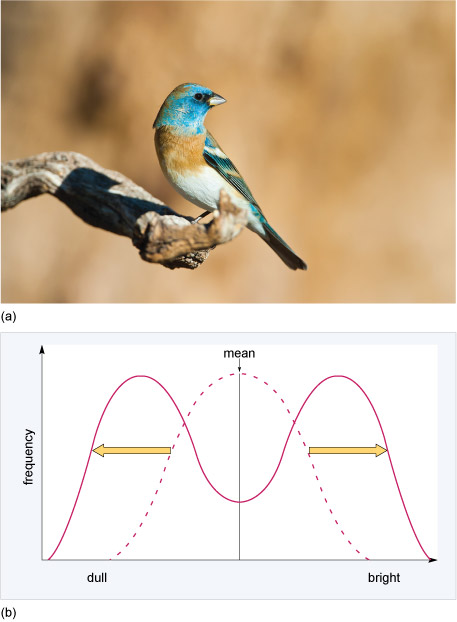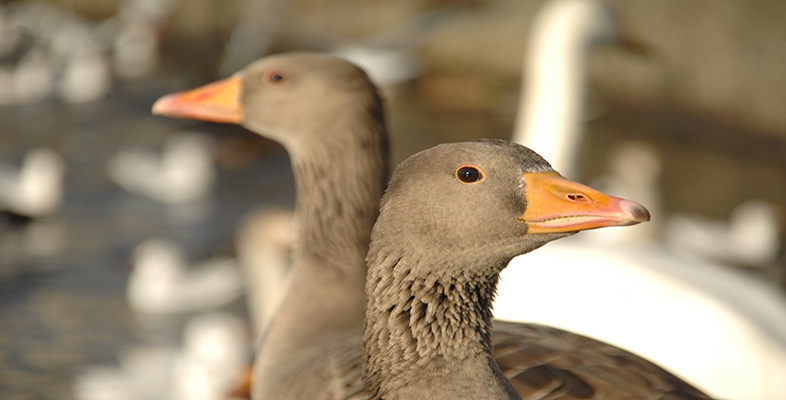3.3 Disruptive selection
Disruptive selection in which selection favours individuals with the smallest and largest values of the trait. These individuals have the highest fitness and individuals with intermediate values are at a fitness disadvantage. One example of this type of selection involves feather colour in male lazuli buntings (Passerina amoena), a bird species native to North America (Figure 15a). The feather brightness of males varies, ranging from brown to bright blue. In a habitat with limited nesting sites, both the dullest and the brightest yearling males are more successful in obtaining high quality territories and therefore attract females. This is because adult males tolerate non-threatening dull yearlings and also leave brightly coloured yearlings alone. Because of their dominance, both these groups are able to establish territories and attract females but yearling males with intermediate plumage are attacked by adults and therefore fail to obtain territories and mate (Figure 15b).

What effect does disruptive selection have on variation in plumage brightness?
It increases variation (increases the range of plumage colour).
Each kind of selection alters the mean of and/or variance in (amount of variation) of the phenotypic trait in a population or species. In the long term, directional selection and disruptive selection can have the most dramatic evolutionary impact and can lead to the formation of a new type from an existing type, the process of speciation.
This contrasts with the action of stabilising selection, which maintains the existing type without change in mean phenotype over long periods of time. Stabilising selection eliminates the extremes in a distribution of phenotypes, and as such it leads to a refinement of the existing type.
Because the trait under selection has a genetic basis, the differential reproduction of individuals carrying the genetic variants - the alleles - that underlie the trait (e.g. body size) results in a change in the frequencies of genetic variants by selection processes. Genetic variants that underlie phenotypes that are reproductively successful will increase in frequency, while those that underlie phenotypes that are not successful in reproducing will decrease. Thus, genetic changes across generations result from differences in reproductive success of genetically determined phenotypes.
